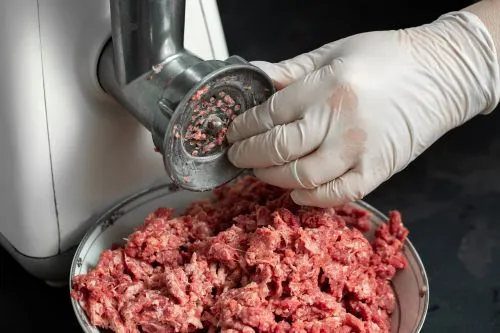1351

Researchers from Italy have explored tail injuries, as well as injuries to the lungs, pleura, liver, stomach, carcass, and thighs in finishing devices, either from conventional docking batches or from standard welfare farms with a complete ban on tail docking, reports PigProgress.
Extended Study
The team collected data for 9 months in an Italian pig slaughterhouse. Trucks transported the pigs to the slaughterhouse in lots of 130 to 140 animals raised on the same farm. In each batch, the researchers selected an average of 100 animals for evaluation.
They evaluated 525 batches (52,500 animals) from intensive systems and 442 batches from conventional farms adopting tail docking procedures, including short docking, long docking, or tilting. They also evaluated 83 batches from farms with high welfare standards, with a complete ban on tail docking.
The slaughter line speed was 480 pigs per hour, and the inspection was performed directly during the slaughter process for approximately 6 to 8 seconds.
Three-point evaluation
The team inspected the lungs (lesions similar to mycoplasma), pleura, liver, and heart from a platform located after the evisceration area. They evaluated skin lesions using a 3-point grading system:
score 0, up to 1 scratch or bite;
score 1, from 2 to 5 scratches or bites;
score 2, more than 5 scratches or bites, or any wound penetrating the muscles.
Furthermore, esophagogastric ulcers were graded using a 4-point scale:
0 = healthy,
1 = hyperkeratosis,
2 = mild erosion and/or ulcer,
3 = severe ulcer. Additionally, a day after the slaughter, all separated thighs (hams) were individually evaluated for defects.
Injuries observed in the slaughterhouse
This study highlighted the importance of the slaughterhouse as a research center, not only for reportable diseases or health disorders but also for various types of injuries and animal welfare. Fresh and chronic tail injuries were recorded in 44% of undocked pigs, compared to 0.2% of docked pigs, with a 27.3% prevalence for severe chronic injuries.
Tail-docked pigs, on the other hand, showed more frequent ear injuries than undocked ones, suggesting a substitution effect between tail and ear biting.
The proportion of injuries in lighter undocked pigs was higher than in heavier undocked ones, ranging from 72.5% to 20-30% due to the unpredictable and multifactorial origin of tail biting. Moreover, older pigs were less likely to show tail injuries.
Additionally, the tail's length after docking, including short docking, long docking, or tilting, could account for different prevalence levels.
Lungs
Lungs are among the organs most commonly affected by infection following the onset of a tail injury. Severe lesions similar to mycoplasma pneumonia, gastric ulcers, and milk spot lesions in the liver were more common in undocked pigs.
However, the pathogenesis of lesions similar to mycoplasma is unrelated to tail lesions, suggesting that tail biting and mycoplasma-like lesions have similar risk factors.
A higher frequency of gastric ulcers in undocked pigs suggests that physical injuries, like tail biting, can trigger histamine release following an inflammatory process, leading to an increasing prevalence of gastric ulcers.
Furthermore, the team found no difference in pleura, skin lesions other than the ears, and ham defects. The absence of frequency differences in ham defects in undocked pigs reassures the market regarding the prohibition of tail docking.
Conclusions
The authors concluded that the higher prevalence of tail injuries in undocked tails suggests that more alternative efforts are needed to manage animals with undocked tails for a more acceptable and welfare-friendly growing system.




